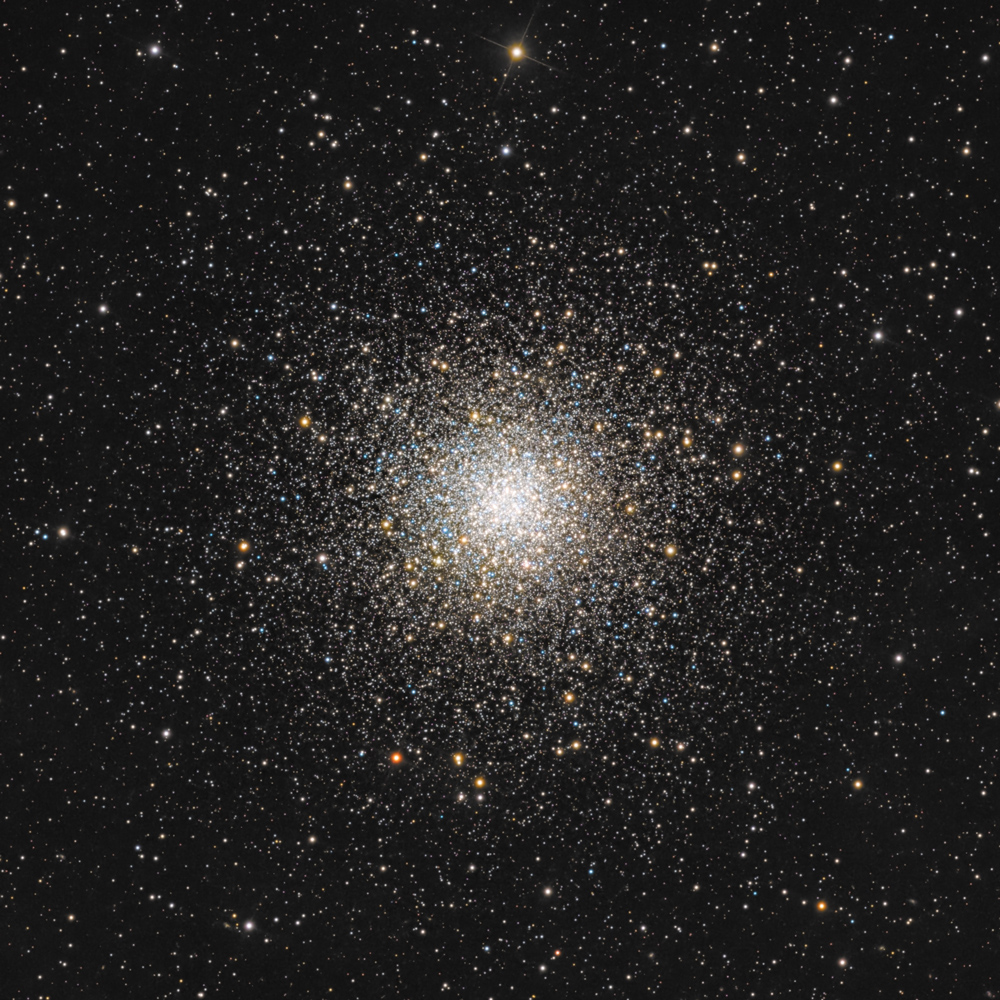

M10: A globular cluster is a group of ancient stars (M10 is thought to be a bit over 11 billion years old, young for a globular cluster),
gravitationally bound to each other, orbiting the core of its associated galaxy. It takes M10 about 140 million years to complete one orbit around our galaxy's center.
M10 is about 14,000 light years from Earth, and is about two-thirds the angular size of the full moon when viewed from very dark skies (although its outer portions are very dim);
it is roughly 83 light years across. It shines at magnitude 6.4 (which might be visible to the naked eye in absolutely dark skies). It has a mass equal to about 200,000 times
that of our sun, and contains as many as 100,000 stars (for comparison, there are estimated to be about 1,000 stars within 15 parsecs/49 light years of earth, which is a
bubble about that same size). It has an unusual concentration of blue-straggler stars (stars that are much less old than the other stars in the cluster, probably formed from
collisions or other interactions between stars in the cluster) near its core.
Copyright 2019 Mark de Regt